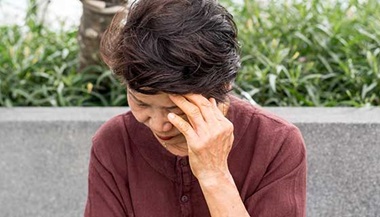Bone Cysts
What You Need to Know
- Bone cysts are fluid-filled spots that form in bone.
- Most go away on their own over time.
- Bone cysts are generally diagnosed through X-rays, often when a child is being seen for another condition.
- While there are often no symptoms, bone cysts can cause the bone to be weak enough to fracture when it otherwise wouldn’t.
What are bone cysts?
Bone cysts are fluid-filled areas inside growing bone that have not developed into osseous tissue or actual bone. There are four main types of bone cysts.
Types of Bone Cysts
Nonossifying Fibromas
A nonossifying fibroma (NOF) is a central portion of the bone that has failed to form into hard bone but instead is fibrous in nature. These are not painful. Most lesions spontaneously resolve without treatment. A NOF is the most common benign bone tumor in children and commonly occurs in the lower extremities in children between the ages of five and 15 years of age. Some researchers estimate that up to 40 percent of all children have a NOF at some point.
Fibrous Cortical Defects
A fibrous cortical defect is a benign bone lesion that forms in the outer edge or cortex of the bone. These most commonly occur in the lower extremities and usually resolve spontaneously.
Unicameral Bone Cysts
Unicameral bone cysts commonly occur in large bones, such as the humerus, near a growth plate. These lesions are fluid-filled areas and usually only occur in pediatric or growing patients. The bone cyst usually gets smaller over time and resolves on its own.
Aneurysmal Bone Cysts
Aneurysmal bone cysts are fluid- or blood-filled areas of bone that most commonly occur in adolescents. Since they are reactive bone lesions, these cysts can present with pain and swelling in the area. They are usually diagnosed with a computed tomography (CT) scan and possible biopsy of the area.
What are the symptoms of bone cysts?
Benign (noncancerous) bone cysts generally do not cause pain, but if they are large enough they can weaken the bone and cause it to fracture. This type of fracture is called a pathologic fracture — a fracture in weakened bone caused by a force that would have otherwise not caused damage to normal bone.
Bone Cyst Diagnosis
Benign bone cysts or lesions are common in children and are usually found by chance on X-rays taken for other medical reasons.
Bone Cyst Treatment
Most often bone cysts resolve with time. Repeated X-rays are usually done to make sure the cyst is getting smaller.
If a pathologic fracture occurs, the cyst may need to be surgically cleaned and then packed with bone graft to fill in the bone and encourage bone healing.




